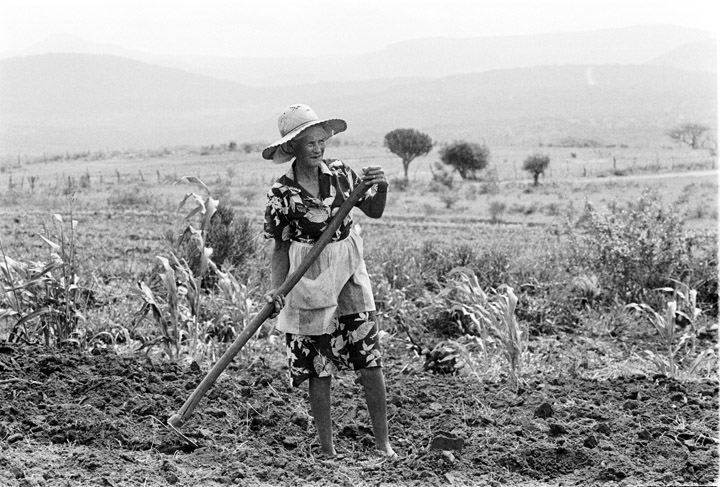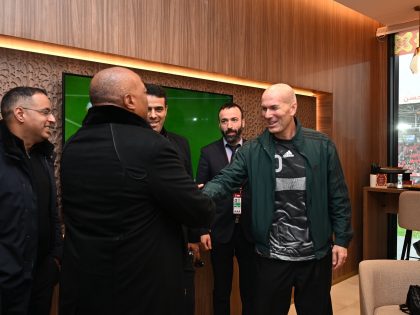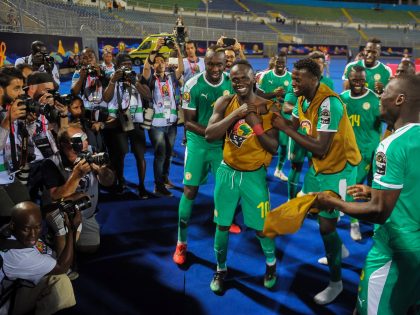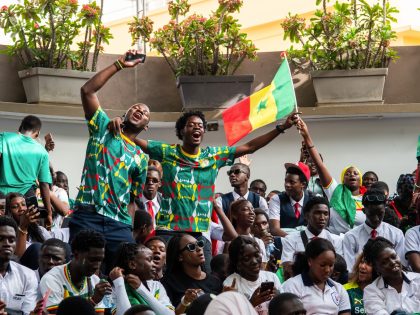The cliché about ‘struggle photography’
Cedric Nunn's photography reflects the complex emotions of his black South African subjects, their humanity, dignity, in very personal terms.

The late Amy Madhlawu Louw by Cedric Nunn.
The historian and curator, Jon Soske, has written about how it is now an art cliché that during the final decade of Apartheid, South African photographers embraced a social documentary mode that subordinated the image to the propagandistic needs of the moment. The cliché further goes that these photographers embraced “naïve literalism over aesthetic experimentation,” and “reduced the complexities of interior experience” to “the mute fact of African suffering.” Documentary photographers were said to have become content merely “to record spectacular instances of repression or deprivation.” The result: They codified a one-dimensional and thus dehumanizing image of black life; “political reportage straight-jacketed the artist. Realism trumped self-reflection … High politics eclipsed the importance of everyday life,” wrote Soske.
One group of photographers usually included, unfairly, in this cliché is the 1980s photography collective and photo agency, Afrapix. Launched in 1982 by a group of black and white photographers and political activists, the group played a “seminal role” in the development of “a socially informed school of documentary photography in Apartheid South Africa.” Basically, a second wave of social documentary photography in South Africa. In effect, updating David Goldblatt and Ernest Cole for late Apartheid.
In their own words Afrapix “… stretched the boundary between the requirements of hard news and developed a socially relevant documentary photography practice that raised critical issues around the role of the photographer (as a witness to the times) and the complex relationship of how people in a racially fractured society were portrayed.”
Because they photographed community- and mass-based struggles and most of them openly allied with anti-apartheid movements, their photography became associated with the generic term “struggle photography.” At first, it was a badge of honor, a sign of their political commitment, but would, once the sheen of the struggle wore off, it would be used as a slur against them, even long after Afrapix disbanded in 1991.
“Struggle photography” was also a caricature as a descriptor of Afrapix since it promoted a much broader range of photographic idioms, reflected complex emotions of his black subjects, their humanity, dignity, and the everyday realities of these black communities in often very personal terms “without abstracting their sorrows and joys from the overarching political context of Apartheid.”
One of the key members of Afrapix was Cedric Nunn, the subject of this retrospective exhibition at David Krut Projects in New York City. Nunn has been described by curator Okwui Enwezor as “… one of the most important photographers of South Africa to emerge in the 1980s.”
Born in a deeply rural part of what is now South Africa’s Kwazulu-Natal province and into a large, mixed-race family with deep roots in the region (his paternal ancestors are English settlers and his maternal ancestors Zulu and Khoi), Cedric’s work incorporates a range of familiar themes (both overt and subtle)—racism, class politics; the legacies of Apartheid; the chimera of new South African black empowerment; and of people on the margins like farmworkers, homeless people and landless people. At the same time, Cedric’s work is also very personal. (Much of the work exhibited here comes from “Blood Relatives” that he started working on as a young man and also put the cliché outlined above, to a lie). It is also about his identity as a coloured South African.
What is interesting about Cedric is that he kept at these themes well after legal Apartheid ended, without necessarily implying a division between these two focuses— the struggle and the personal. Throughout the time he was photographing for Afrapix, he would return periodically to rural Kwazulu-Natal, where he photographed the world of his childhood, his extended family, and especially that of his grandmother, Amy Madhlawu Louw, who worked her own land until she was 88 and died when she was 103 in 2003. Amy Louw’s house—destroyed by land invaders when she died—now only exists in Cedric’s photographs. His work also includes photos of his mother who died in 2010.
As a long-time fan of Cedric’s work, I was delighted to be asked to say a few words at the opening of this retrospective. And it’s been wonderful hanging out with him and talking to him about the subjects of his photographs, his personal history, his approach to photography and his improbable personal journey.
Somewhere else Cedric has described his childhood as “very image scarce.” Cedric was expelled from high school at the age of fifteen, and was working in a sugar factory soon after he turned sixteen. He spent the next eight years working in that factory, and the experience was a transformative one in which he was swept up in the upsurge of worker organization and politics of the mid- to late seventies. In his own words, he had found himself a factory worker by default and sought to change that. Given his lack of education and the job discrimination of the day, this wasn’t easy. It was his father, Herbert Nunn, a shopkeeper, who told him when he was frustrated with his life, “Do something about it.” Cedric found photography when he saw the portfolio of a photography student at a technical college in Durban, Peter McKenzie (also later a member of Afrapix). He recognized the medium as one he could attempt and master.
With McKenzie’s help he set out to learn and soon found a mentor in Omar Badsha, probably the most prominent photographer of the Afrapix collective. Cedric also recalls with hindsight that he’d been exposed to the best of the Magnum photographers through the Time Life that his father subscribed to. Other influences on his work include other Afrapix members: Paul Weinberg, Santu Mofokeng (whose work is being exhibited in the same building) and Guy Tillim. Through Afrapix he was also influenced by David Goldblatt.
In Cedric’s works you’ll note a mix of the familiar sites of anti-apartheid struggle, of the news events of that time, that we can identify easily if you know that history, but it also includes work that is not as headline grabbing, which one critic has described as “more quotidian, and considerably quieter.”
I want to conclude with a quote from an interview I did last year with Cedric for a South African academic journal, Social Dynamics, where I asked him about his approach to photography. He said:
I have never felt comfortable with the category of ‘documentary photography’ and half seriously say that I’m not ‘a photographer’s photographer’. I see photography as one of the most democratic mediums of the contemporary world, much as writing is, in that since the advent of Kodak and the Brownie camera, photography has been a potential medium of the masses. Quite untrained, I was able, with a little direction, to use the medium to express my view of the country and world I inhabited. So, I wasn’t really trying to document neglected aspects of my society, as bringing witness to a view that was neglected by the mainstream media of the time. Naively, I thought I could record images of my familiar world, as well as the attempts to change the socially engineered world of the time, and this intuitive attempt was largely proved correct with time.
Let me close with something else Cedric has said about his work. In an interview with Enwezor – published in the book “Call and Response” that forms part of this exhibition – Cedric is asked to reflect on his work: “I was a bit disappointed by the fact that I didn’t have that strength of conviction to follow my original vision. I would have produced far stronger work if I had followed that vision – those quiet images that I could have made if I had spent far more time exploring the backwaters and backstreets of the world that I lived in. If I had stayed with that, those are the images that I would have made.”



















